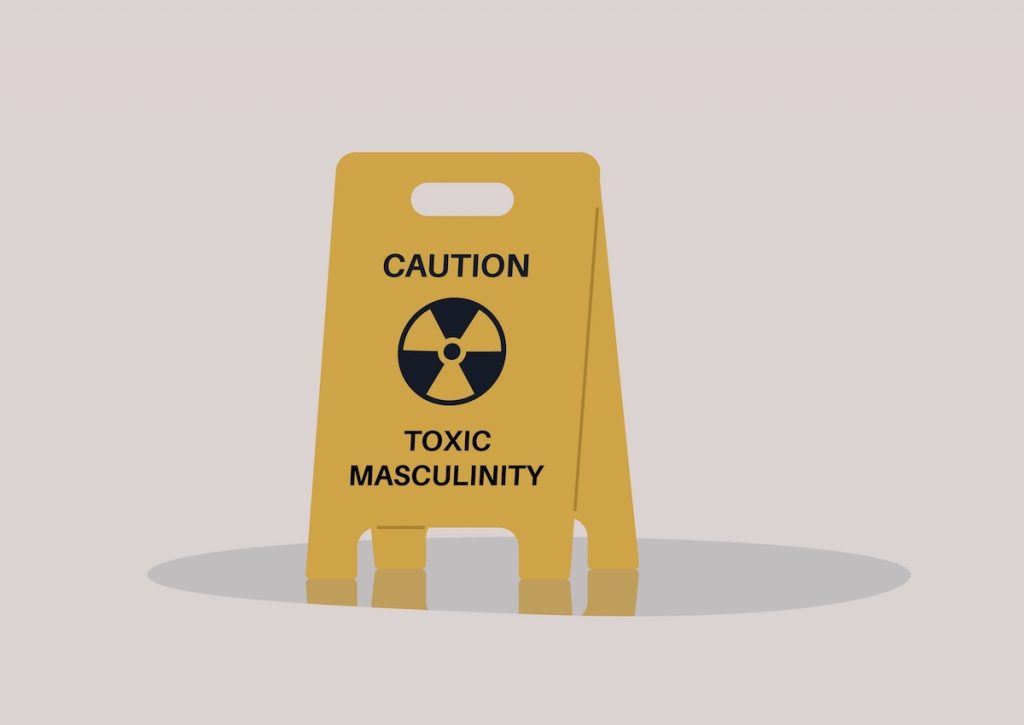
In most developed countries, male suicides are more common than female suicides, at around a three times higher rate (Lengvenyte et al, 2021; Turecki et al, 2019). Men are less likely to seek help from professionals, often due to traditional, socially constructed masculine norms (Seidler et al, 2016).
Whilst quantitative research can determine who is most at risk of suicide, understanding why this is can be much more complex, not least because suicide itself is a complex behaviour with a wide range of components combining, and acting independently. Qualitative work is needed to further understand the pathways and mechanisms that contribute to suicide.
This blog summarises a recent systematic review of qualitative evidence exploring the risk and recovery factors for male suicide globally (Bennett et al, 2023).

Male suicides are more likely to happen compared to female suicides in developed countries, but why?
Methods
Bennett and colleagues (2023) searched seven databases for qualitative studies to understand common themes and psychological phenomena underpinning male suicide risk and recovery, perceived and experienced by men who are suicidal, and people bereaved by male suicide. Once articles had been screened, reference searching on included studies was performed.
The review looked exclusively at studies exploring adult-aged men, defined as 18 and over, using studies from 2000 to 2020. Only published work was searched for, justified as a means of quality control.
The screening was performed by one reviewer at the title and abstract stage, with 20% of the titles/abstracts screened by two independent reviewers. A similar strategy was used at full-text screening. The quality of the papers was assessed using the National Institute for Health and Care Excellence (NICE) quality appraisal checklist for qualitative studies.
Data analysis occurred through coding of each article which led to descriptive themes being identified, which generated analytical themes used for the qualitative meta-synthesis.
Results
The authors identified 78 studies covering a population of at least 1,695 individuals, of whom 902 were suicidal and 793 had been bereaved. There were 16 studies each from Norway and the UK; 14 were from low- and middle-income countries.
An overview of the emerging themes included in the review is presented in the table below. The authors have developed two models to represent the findings for risk and recovery separately.
- The risk model suggests some psychological pain and risk may be determined by denial, disconnection, and dysregulation in the domains of emotions, self, and interpersonal connections.
- Meanwhile, the recovery model suggests that recognising, reconnecting with, and regulating those phenomena may aid in reducing the pain and the risk. The authors also found that proximal risk factors were heightened manifestations of distal ones.
| Factors | Overarching Theme | Descriptive Theme |
| Risk | Norms of emotional suppression | Emotional suppression and dysregulated psychological pain
Childhood adversities affect emotional development Help-seeking rejected as weak Negative experiences accessing mental health care Ineffective coping strategies exacerbate pain Suicide associated with intolerable psychological pain Suicide associated with hopelessness, defeat and entrapment |
| Risk | Failing to meet norms of male success | Failed masculine selves and aversive self-awareness
Performance of self to conceal distress Childhood adversities affect self-esteem Suicide associated with killing of a failed self Suicide associated with regaining control |
| Risk | Norms that suppress men’s interpersonal needs | Interpersonal disconnection, isolation and loneliness
Interpersonal challenges and dysregulation Struggling to trust Suicide associated with interpersonal stressors and losses Suicide associated with unbearable isolation and loneliness Suicide associated with perceived burdensomeness Proximal Indicators of suicide risk challenging to read |
| Recovery | Regulating psychological pain | Emotional regulation and control
Interpersonal care and connection Peer connection and expansive masculine selves Being respected and valued by professionals Contextualized suicidal pain |

Gender norms and perceived failure as a man appear to have an influential role in male suicide.
Conclusions
Suicide prevention must aim to tackle many different factors that can increase the risk of suicide, whilst needing to assume gender-sensitive interventions and policies that encompass the role of masculine norms in society. Exploring the recovery factors that support (from several avenues) is crucial. The findings reiterate the complexity of suicide but also that some suicide risks will be unique to each individual, each with their own experiences of the risks described.
The authors conclude:
Findings from this review suggest that deepening our understanding of certain masculine norms, and how they may harm some men could be critical to shaping effective male suicide prevention work.

Understanding masculine norms is a key area for suicide prevention.
Strengths and limitations
One of the main strengths of this review is the meta-synthesis that accompanies the systematic review of qualitative studies. It allows a deeper understanding of the themes identified in the review and creates a bigger, more connected picture of the complexity of suicide.
Similarly, a strength of this review is a section acknowledging the role lived experience may have in some of the interpretations of the review, and how the authors have implemented a rigorous methodology to avoid personal biases influencing the results.
One major limitation is the lack of inclusion of non-English language studies. Suicide has the highest burden in low- and middle-income countries, where English is less likely to be spoken, therefore, this review may mostly focus on risk factors for men in higher-income countries; just under a fifth of studies identified were not performed in countries designated as high income. Similarly, whilst not a limitation of the review itself, but rather a limitation of the available evidence, results and conclusions are mainly based on White and cis-gendered individuals. Because of this, the results may not be generalisable to other communities, which account for a large number of the population worldwide; the groups not represented may be at a greater risk of suicide.

This review is mainly based on data from White participants, preventing the findings from applying to other racial demographics.
Implications for practice
The review itself offers several areas where this work could be translated into practice and where the current strategies are lacking in effectiveness. Different strategies and interventions targeting different groups are necessary. These include: a) interventions for at-risk individuals such as therapeutic support, b) non-clinical interventions, such as community support and c) clinical interventions with gender-sensitive and competent clinicians. For medical professionals, there is a need to support men to understand and regulate emotions and suicidal pain. This support needs to come without judgment and pity; there needs to be a feeling of balance within the therapeutic relationship.
There are risk and recovery factors that are exhibited in men who have experienced suicidal thoughts, feelings, or attempts and people bereaved by male suicide. Norms constructed by society appear frequently as a risk factor. The evidence can be considered by clinicians during assessments, formulation of a treatment plan, and decision-making to help suicide prevention in this population. Where these risk factors are present, the thorough exploration of protective factors, such as meaningful relationships and support systems, is needed alongside a comprehensive risk plan. Risk factors for suicide can rarely be understood in isolation, with likely interaction of experiences between and within the themes identified, further reiterating the complexity of suicide.
There is a stark need for additional quantitative and qualitative research on suicide in males to further understand the mechanisms and pathways of suicide, particularly in groups typically underrepresented in current suicide research. The authors of the review highlight 22 different areas they have identified that require further research to improve knowledge and validate their findings. These include research targeting the general population to understand the norms of masculinity and to understand social representations of suicide as well as other research targeting at-risk men, services, significant others, and the community to increase the body of research on the areas identified as risk and recovery factors. Additional research is needed on more diverse groups, representative of the global population.

Risk factors, such as gendered narratives of masculinity within society, need to be taken into account during assessment, formulation, and intervention with men.
Statement of interests
No conflicts of interest.
Links
Primary paper
Bennett, S., Robb, K. A., Zortea, T. C., Dickson, A., Richardson, C., & O’Connor, R. C. (2023). Male suicide risk and recovery factors: A systematic review and qualitative meta-synthesis of two decades of research. Psychological Bulletin, 149(7-8), 371–417.
Other references
Lengvenyte, A., Conejero, I., Courtet, P., & Olié, E. (2021). Biological bases of suicidal behaviours: A narrative review. European Journal of Neuroscience, 53(1), 330–351.
Seidler ZE, Dawes AJ, Rice SM, Oliffe JL, Dhillon HM. The role of masculinity in men’s help-seeking for depression: A systematic review. Clin Psychol Rev. 2016 Nov;49:106-118.
Turecki G, Brent DA, Gunnell D, et al. Suicide and suicide risk. Nature Reviews Disease Primers 2019 5:1. 2019;5(1):1-22.
Photo credits
- Photo by Craig McLachlan on Unsplash
- Photo by Taylor Smith on Unsplash
